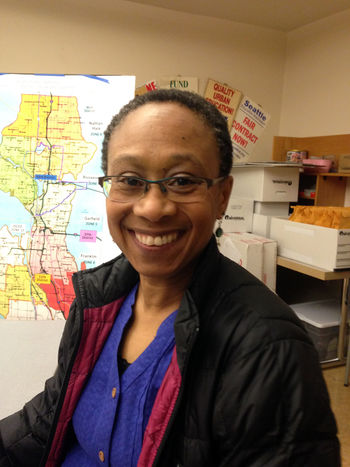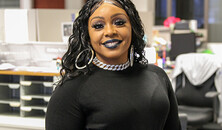SEA members tackle equity issues through collective bargaining

In the lead up to the 2015 Seattle Education Association strike, members said in surveys that disproportionality and dealing with other equity issues was a top priority that needed to be addressed in the new contract. While Seattle Public Schools was aware of the issue and even trying to take steps forward with a grant they received from the City of Seattle, pressure from SEA helped propel the issue.
"Some administrators said resources weren’t available to work on this while others understood it was important,” SEA Executive Director John Donaghy says. “Some people in the district kept saying they liked our proposals but that they didn’t go far enough. While that may be true, that wasn’t a reason not to start taking steps to create positive change.”
Members pushed hard to work on equity issues during the 2015 strike. While many are concerned about disproportionate discipline – the fact that students of color are often treated differently than their white counterparts when it comes to school suspensions and other disciplinary action – the umbrella is much broader than just that.
SEA bargained the creation of a Partnership Committee during the 2015 strike so the district and union could work together to dig into restorative justice and other equity issues. The 14-member committee, co-chaired by SEA member Shelly Hurley, oversees and supports the work done by 21 Equity Teams in the district. Prior to the strike, the district was awarding Race and Equity work grants in 10 schools.
No overnight solution
Hurley says there is a huge sense of frustration from teachers at so many schools when it comes to figuring out appropriate and equitable ways to discipline. Many thought a program would be in place immediately following the bargain, but dealing with tough issues takes time. Meanwhile, a lot of teachers are throwing their hands up saying, “Now what?”
The Equity Teams are coming together from around the city to learn from one another and to share what’s working and what is not. Each team has different goals. While some might primarily approach inequity in discipline, others focus more on inequity among programs within the school.
The teams are charged with implementing the Racial Equity Analysis Tool in all school decision-making, sharing lessons, results and promising practices with students, families, staff, community and colleagues from other schools. The teams also collaborate with school Building Leadership Teams in various ways to implement strategies to eliminate disproportionality in discipline and advance educational racial equity.
The long-term idea is that the Equity Plans will be woven into every school's Continuous School Improvement Plan (CSIP). CSIPs are required to speak to equity issues anyway, so Equity Team plans should blend in nicely.
Empowered members through collective action
Donaghy says he is proud that members were able to push this in collective bargaining.
“This was a program that was on the back burner," Donaghy says. "Both the district and SEA had similar ideas, but we bargained in that the ideas needed to be backed with financial and human resources. If we do it well, we’ll have Equity Teams at all 100 schools.”
On top of the 21 teams up and running now, 10 more will be added next year. Hurley says some educators at schools who applied in the first round who did not receive grant money went ahead and started doing equity work on their own. There is a lot of excitement, dedication and passion around these issues among SEA members.
Hurley also says that one of the things that excites her about this work is that it isn’t only SEA members.
“I sit in this room with people on the other side of the table and I see how important it is to them, also and this work is going to make Seattle Public Schools rise above and once we get it working well, other districts will want to replicate what we’re doing,” Hurley says. “I feel like we’re all on the same page. The frustration is that the district is big and moves very slowly. If something needs to be fixed, I want to fix it. I have to reign in my ‘let’s go.’”
Donaghy points to Washington Middle School as an example of where the work is already making a difference. There is inequity in programs and SEA members took the initiative to blend programs in the sixth grade so all students have the opportunity to excel. The plan is to roll it up to seventh and eighth grades.
Next steps include forming new Equity Team cohorts and figuring out the best way for current and future teams to measure progress and success.
Seattle schools participating in the equity program
| Elementary | Secondary | Interagency |
|---|---|---|
| John Muir | South Shore MS | Ballard HS |
| Olympic Hills | Aki Kurose MS | Cleveland HS |
| Rainier View | Denny MS | Chief Sealth HS |
| Bailey Gatzert | Washington MS | Nathan Hale HS |
| John Stanford International | Seattle World School | Rainier Beach HS |
| Thurgood Marshall | West Seattle HS | |
| Wing Luke | ||
| Sacajawea | ||
| Leschi |


